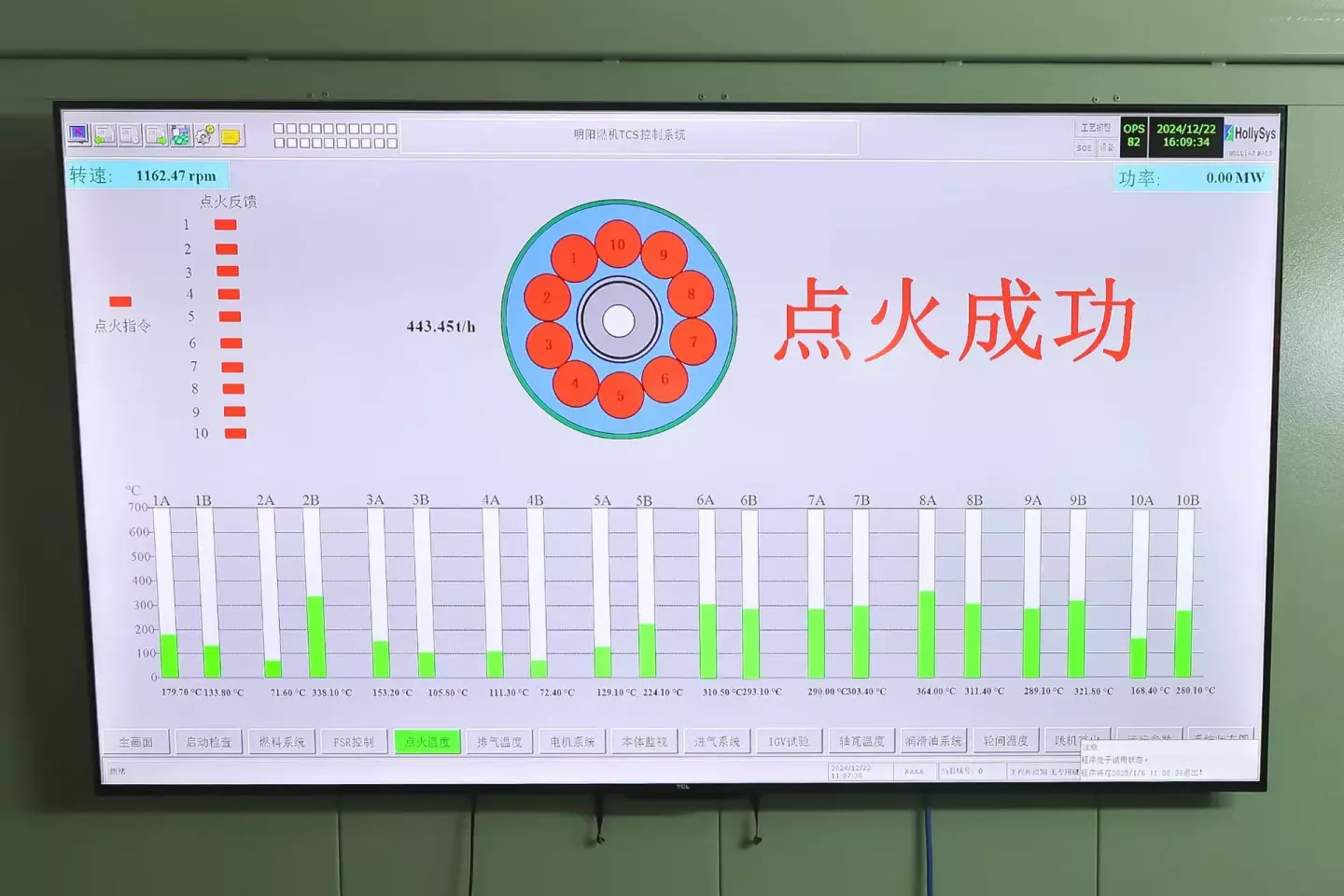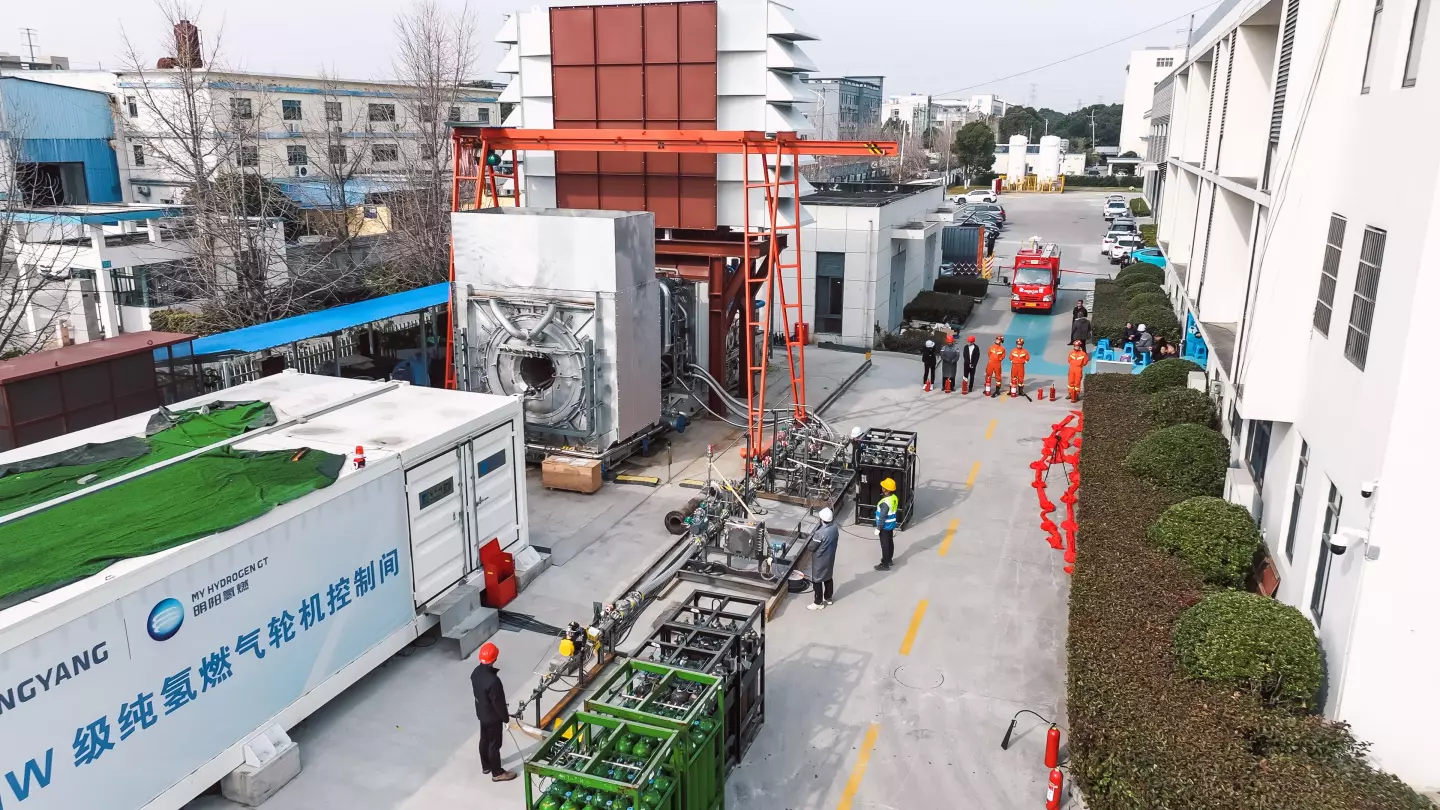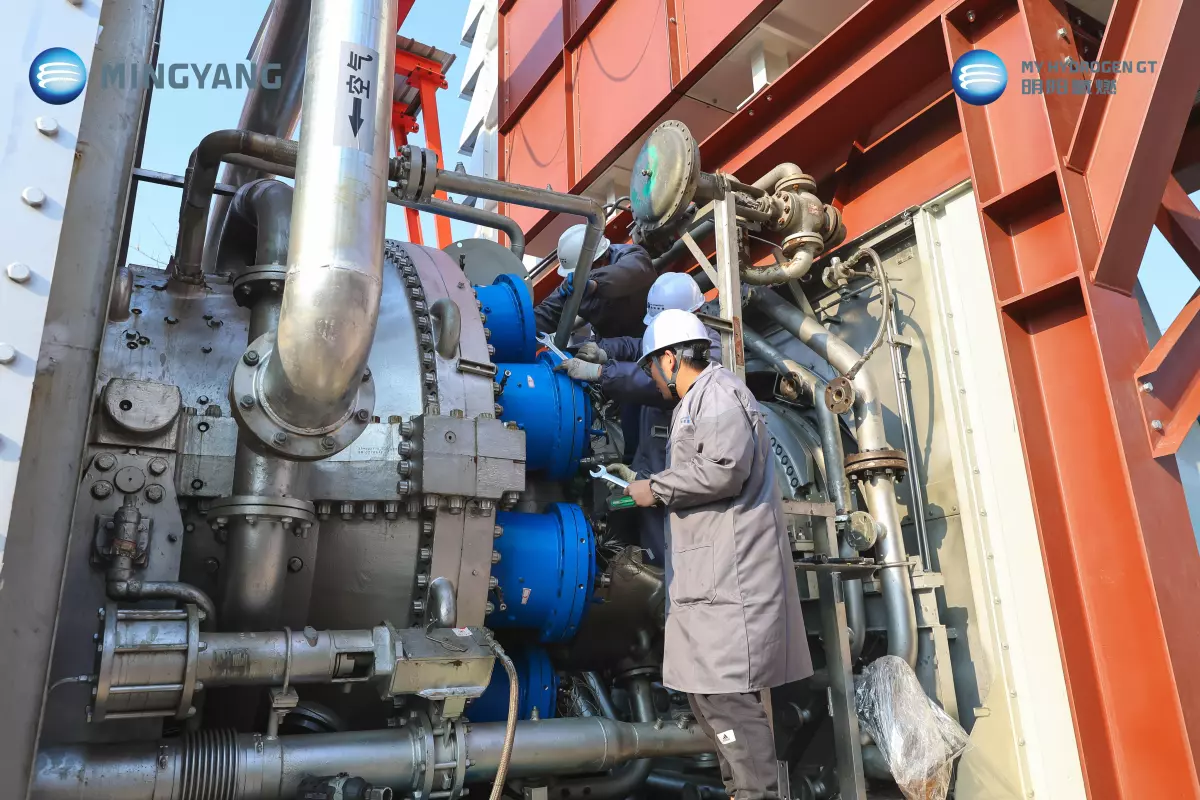The first and largest of its kind: a 30 MW, pure-hydrogen electrical generator called the Jupiter One just completed its first successful full-system test.
The Jupiter One is the most powerful and largest pure hydrogen generator on the planet. It was developed in collaboration with Mingyang Smart Energy, known for colossal wind turbines, and Mingyang Hydrogen Energy along with several research teams and smaller enterprises.
Through advancements in combustion chamber design, the companies were able to overcome major technical challenges typically faced with hydrogen combustion like managing fluctuations in pressure, flow, or combustion dynamics within the system, known as oscillations, and reducing the sheer amount of emissions – especially on such a large scale.
The end result is a proprietary hydrogen gas turbine, putting China at the top of innovative hydrogen energy design.

The scale of the Jupiter One is staggering. The image provided by Mingyang shows a fuel consumption rate of 443.45t/h (tons per hour) through its ten firing chambers. To put that into perspective, the Hindenburg airship, infamous for being filled with hydrogen before its catastrophic demise, was filled with roughly 18 metric tons of hydrogen. The Jupiter One generator moves enough hydrogen to fill the Hindenburg about 25 times per hour.
Also, according to the image above, the bright red text reads "Ignition Successful." The generator was running at 1,162 RPM with a power output (top right) of 0.00 MW. The bottom graph shows the temperature of each of the ten chambers (1A through 10B) in Celsius.
Mingyang states that the use of large-scale hydrogen generators would ensure grid stability and mitigate the curtailment issues (overproducing at times, when the grid can't handle the output energy at that moment) of large-scale renewable energy projects like wind and solar that are upwards of 1 GW.
While the original press release on STDaily doesn't specify how the generator could fix issues like curtailment, it could theoretically do so by "storing" the excess energy through other means, like using excess power for electrolysis. By splitting water into hydrogen and oxygen – which requires a substantial amount of electricity – they could make more fuel for later use.

As it stands, China leads the world in renewable energy with over 310 GW of solar and 400 GW of wind power as of 2023 and is home to the world's largest renewable energy equipment manufacturers, like Mingyang Smart Energy. In 2022, China spent US$546 billion on clean energy projects. That's nearly half of the global total.
On that same token, roughly 60-65% of all electricity in China is produced from fossil fuels, primarily coal-fired plants, making China the world's largest coal consumer and producer.
A majority of China's renewable energy resources like wind and solar are located in the western and northern parts of the country, however, much of China's population and electricity demand lies to the east and along the coast, leaving significant transmission gaps. Estimates are as high as 25% in curtailed (wasted and unused) renewable energy due to China's power grid being unable to handle the incoming energy or transmit it to where it's needed most.
Technology like the Jupiter One 30 MW hydrogen generator just might make these inefficiencies and inadequacies no longer a problem.
Source: STDaily






